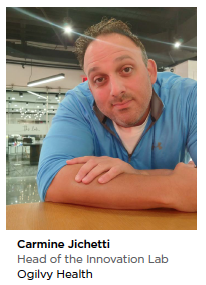 Times change. It’s cliché to say it, I know, but it really is one of the few constants in the universe. Yet many agencies still struggle with this truth. Of course, it’s easy to get caught up in the day-to-day routine of agency life. Everything just cruising along, no insurmountable bumps, nothing to derail the task of working to produce promised work. Meanwhile, there are rumblings from clients about new offerings the competition is touting.
Times change. It’s cliché to say it, I know, but it really is one of the few constants in the universe. Yet many agencies still struggle with this truth. Of course, it’s easy to get caught up in the day-to-day routine of agency life. Everything just cruising along, no insurmountable bumps, nothing to derail the task of working to produce promised work. Meanwhile, there are rumblings from clients about new offerings the competition is touting.
In more traditional agencies, account managers might easily brush off such concerns with comments like, “We’re not scoped for that" or “The client doesn’t have the money for it." All standard, justifiable excuses until the day one of these clients informs you that they are sending out an RFP for a new AOR…uh-oh. What can an agency do at that point? How does it catch up? Truth be told, by that time, it’s too late. This is a very real scenario that happens more often than you might think. The “winds of change" — a great, guilty pleasure song by the way — have blown in and uprooted what was once perceived as a stable account.
More often than not, the catalyst for the change, or culprit depending on your view, is technology. Sometimes the technology in question can represent a major disruption that will affect all aspects of a client’s ability to reach their target audiences and grow brand value, and sometimes it’s just a fad that will quickly become obsolete. Time, and those agencies with their fingers on the pulse of emerging digital trends, will be able to help clients make those distinctions. But the truth is, the volume of emerging technologies can be extremely overwhelming for anyone to keep tabs on, much less help define how they can be beneficial to address a client need that the client often doesn’t even know they have yet.
So how can an agency, already immersed in taking care of their client’s day-to-day, immediate needs, get out in front of this, keeping clients abreast of the latest tech breakthroughs and ahead of their competitors? By committing to and investing in an in-house innovation lab. Not a workspace where a single discipline gets to control access but an all-inclusive physical space at the agency to encourage cross-discipline collaboration and enhance strategic and creative thinking. A place that exists to develop new ideas and even dust off and enhance older ones. A space to make things, to break things, and where people can bring blue-sky thinking to the table for honing. Sounds like a luxury, right? But create a space that allows marketers with different specialties and expertise to come together and share those unconventional concepts for client- or industry-driven business problems and an innovation lab becomes a game changer for an agency — and its clients. With an agile approach and streamlined objectives, big ideas and lofty goals become tangible within weeks, not months. The ability to deliver tangible solutions at a low-cost and at a rapid pace produces both results and happy clients, who know their agency partners are constantly working on new ways to approach and tackle their challenges.
Spurring Organic Growth
Innovation labs also spur organic growth, another phrase that perks up the ears of marketers and clients alike. The organic growth could mean new business opportunities for both of the interested parties. Another added value of an innovation lab can be seen when looking at the agency’s employees. An innovation lab allows individuals who might not have “creative" in their job title a safe place to showcase their creative abilities. There should be no barrier to entry for an innovation lab — collaboration means everyone. An HR rep, a project manager, or even a financial administrator could potentially have an unorthodox idea that just needs to be kicked around a bit to turn into something groundbreaking for a brand. Fresh perspectives, especially from those teams in daily talks with clients, will lead to a more laser-focused approach to address clients’ constantly evolving needs. Activating the creative talent agency-wide, not just within the confines of the “creative department," is an asset not many agencies can offer their clients. The pioneering environment of an innovation lab inevitably encourages hidden expertise to emerge from unexpected sources, allowing agencies to keep more work in-house. Not having to farm work out to third-party vendors saves money, as well — and clients, like everyone else, like saving money.
What an innovation lab is not, or shouldn’t be, is a space that resembles a museum where the latest gadgets are out on display. It’s so much more than that — it’s part tech lab, part maker space, part think tank, part design center — all with the common goals of expanding the agency’s knowledge base and capabilities and finding solutions to clients’ seen and unforeseen business obstacles. Ultimately, having an agency innovation lab on-site helps meet not only the ever-changing needs of clients but also those of an agency always looking to evolve beyond today and lead into tomorrow.(PV)
Ogilvy Health is a global network that delivers insight, creativity and innovation to drive growth and impact for our clients’ brands.
For more information, visit ogilvyhealth.com.











